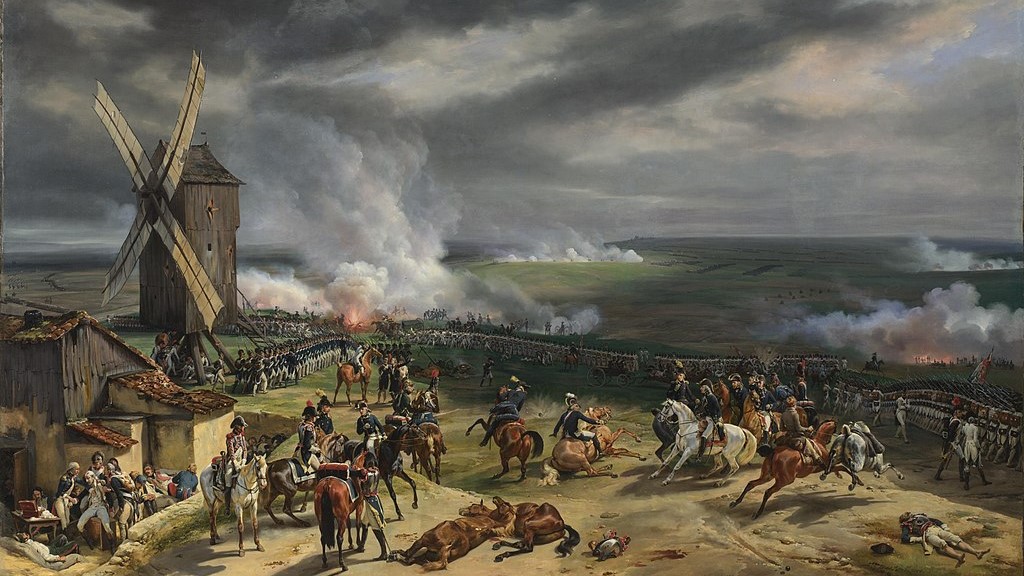Dishonest historians encourage us to draw clean lines between nations and their revolutions, as though the great political upheavals of Europe unfolded independently. But the French Revolution of 1789 did appear vividly, to many Hungarians of the 19th century, as both a challenge to the old order and a blueprint for something new.
This then begs the question: how deeply had the French Revolution entered Hungary’s intellectual bloodstream in the lead-up to and all the way to the end of its own revolution in 1848–1849?
To uncover this, we turn to Sándor Lukácsy’s detailed 1973 study on the subject.
From Suspicion to Fascination
It is through tightly censored newspapers that Hungarian readers first encountered the French Revolution in the early 19th century. Ironically, even the government’s fears helped the initial spread of revolutionary ideas: in their quest to condemn Robespierre and Saint-Just, the papers printed them verbatim and at length.
Such ‘warnings’ introduced the rhetoric of liberty, equality and fraternity to audiences hungry for reform. Foreign-published periodicals, such as Le Moniteur, circulated among the educated elite, broadening their horizons. Soon, as Lukácsy writes, ‘L’époque de l’historiographie de la Révolution française commençait’ [The era of revolutionary history had begun], with books following newspapers and history towering over journalism as the battleground for political meaning.
The first Hungarian to grasp France’s revolution as a living experiment was Sándor Bölöni Farkas. He visited Paris in 1831, one year after Charles X, the reactionary king of France who had succeeded his wilier but morbidly obese brother Louis XVIII in 1824, had been deposed in favour of Louis-Philippe, who called himself king of the French.
Bölöni Farkas wrote with admiration that ‘La France est le champ d’essai de tous les principes politiques.’ [France is the testing ground of all political principles.] He believed that Hungary, which was still ruled by aristocratic privilege, would have to either reform or face its own upheaval.
Censorship forced even sympathetic voices into cautious disguises. When Ferenc Kölcsey rebuked his friend Mihály Vörösmarty for referencing Edmund Burke’s anti-revolutionary writings, he regretted that Hungarian writers could only discuss the Revolution through its critics, especially as he considered that history’s great convulsions were inevitable. As he put it: ‘Les mouvements populaires violents sont comme les orages des cieux…prescrits par les lois immuables de la fatalité.’ [Violent popular movements are like storms…fated by immutable laws.]
Reformers at the Crossroads
Lajos Kossuth revered liberty but distrusted extremism. Studying the French Revolution during his imprisonment, he condemned the Jacobin dictatorship and wrote of Robespierre that he was ‘une bête fauve dont le nom mérite d’être maudit’ [a wild beast whose name deserved to be cursed]. For him, freedom and terror could never coexist. By contrast, Count István Széchenyi considered the French Revolution a warning. His motto was ‘Les réformes sont les seuls moyens pour prévenir les révolutions’ [Reforms are the only way to prevent revolutions].
‘Violent popular movements are like storms…fated by immutable laws’
Between Kossuth’s fiery populism and Széchenyi’s cautious paternalism lay the central dilemma of Hungarian politics: whether progress should be earned through persuasion or seized through passion.
József Eötvös gathered hundreds of volumes on the French Revolution, determined to understand its causes and failures. He admired Tocqueville’s L’Ancien Régime et la Révolution for its sense of continuity and refusal to treat revolution as a sudden rupture.
László Szalay shared that conviction yet expressed it through a more personal model. As regards admiration for eloquent leadership, Lukácsy notes, ‘Mirabeau eut en cela un imitateur en László Szalay’ [Mirabeau had an imitator in this respect in László Szala], as a bridge between people and parliament.
For these reformers, France’s tragedy offered intellectual discipline and preparedness for when the ripples of history would reach the borders of Hungary.
By the mid-1840s, the liberal reformers had succeeded in publishing Hungarian translations of major French histories, notably François Mignet’s Histoire de la Révolution française. Editors like József Bajza hoped these texts would instruct citizens rather than inflame them; yet among younger readers, the Revolution came alive again. Lukácsy observes that ‘La Hongrie…participa pourtant à ce grand effort intellectuel tendant à repenser les faits historiques’: Hungary, though producing no original histories, fully joined the European intellectual effort to rethink the Revolution.
Reading Mignet or Thiers, young Hungarians began to see their own feudal society as a relic, and themselves as possible heirs to 1789.
The Radical Generation
The French Revolution eventually became the instruction manual of the radicals of the 1840s. Mihály Táncsics, a self-educated writer of peasant origin, devoured Étienne Cabet’s Histoire populaire de la Révolution française. Lukácsy writes: ‘Ce livre fit de Robespierre…un républicain inébranlable.’ [The book made of Robespierre an unshakeable republican.] It thereby made Robespierre’s posthumous disciple of Táncsics, who interpreted Jacobinism as moral courage against privilege.
Reading Cabet’s Voyage en Icarie, he concluded that equality also demanded economic transformation (take, for example, the 29 September 1793 Law of the General Maximum, which set price limits and punished price gouging in the city of Paris).
Pál Vasvári, one of the key organizers of the 1848 revolution, also drew on Cabet’s works and the republican historians Michelet and Louis Blanc. He defended the Jacobins as victims of reactionary violence, claiming that without their resistance, liberty itself would have perished. Vasvári and his circle met in Budapest cafés, read aloud from revolutionary texts and sang the Marseillaise; to them, the Revolution could be translated, as it and its associated songs thoroughly were into Hungarian, including La Carmagnole, Ah! Ça ira, and the Chant du départ.
Sándor Petőfi embodied the final fusion of poetry and revolution. He read Cabet, Thiers, Lamartine and Esquiros; he kept Marat’s portrait in his room beside that of his friend János Arany. He came to believe, flatly and outright, that ‘L’histoire de la Révolution française est la Bible de l’humanité’ [The history of the French Revolution is the Bible of humanity]. In this, Petőfi would be echoed by the old revolutionary who disconcerted Bishop Myriel in Victor Hugo’s Les Misérables by declaring on his deathbed: ‘The French Revolution is the most powerful step taken by humankind since the coming of Christ.’
Related articles:







